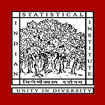Gender bias in household education expenditure: The case of West Bengal
Document Type
Conference Article
Publication Title
Indian Growth and Development Review
Abstract
Purpose - This paper aims to detect gender bias in education expenditure on "students", who are children and young adults, in a household in the rural and the urban sectors of West Bengal. Outlay equivalent ratios have been calculated using the Engel curve approach, where the budget share function is log quadratic in income, to identify items relating exclusively to education of school/college going students. Heckman's (1979) two-step procedure is used for estimation to address selection bias The 68th round (July 2011 to June 2012) household level consumption expenditure survey data of the National Sample Survey Organisation have been used for the analysis. Design/methodology/approach - Engel curve approach is used to capture parental preference for student's welfare and to find the existence of male student favouritism in the field of education. In case of exclusive adult goods, the addition of a student will reduce the resource allocated for adult goods leading to negative income effect. If a household favours males over females, then that household is likely to sacrifice more for a male student's education than that for a female student. To address selection bias, Heckman's two-step procedure has been used. Findings - The authors find that not all education items relate exclusively to students of a household. Expenditure on books is not exclusively for students, whereas other educational items, such as stationary and photocopy charges, tuition fees and private coaching fees, are found tobe students' items only. Transport cost is found to be an adult good. Further, we find evidence of pro male bias in expenditure on educational items, and the extent of gender bias is more in the urban sectors compared to the rural sectors in West Bengal. Originality/value - The objective of this paper is to identify the educational items exclusively for "students" and to test the difference in the allocation of resources in education, with respect to these items, between a male student and a female student for both sectors in West Bengal, using the outlay equivalent ratios.
First Page
129
Last Page
150
DOI
10.1108/IGDR-04-2016-0018
Publication Date
1-1-2016
Recommended Citation
Majumder, Amita and Mitra, Chayanika, "Gender bias in household education expenditure: The case of West Bengal" (2016). Conference Articles. 719.
https://digitalcommons.isical.ac.in/conf-articles/719

